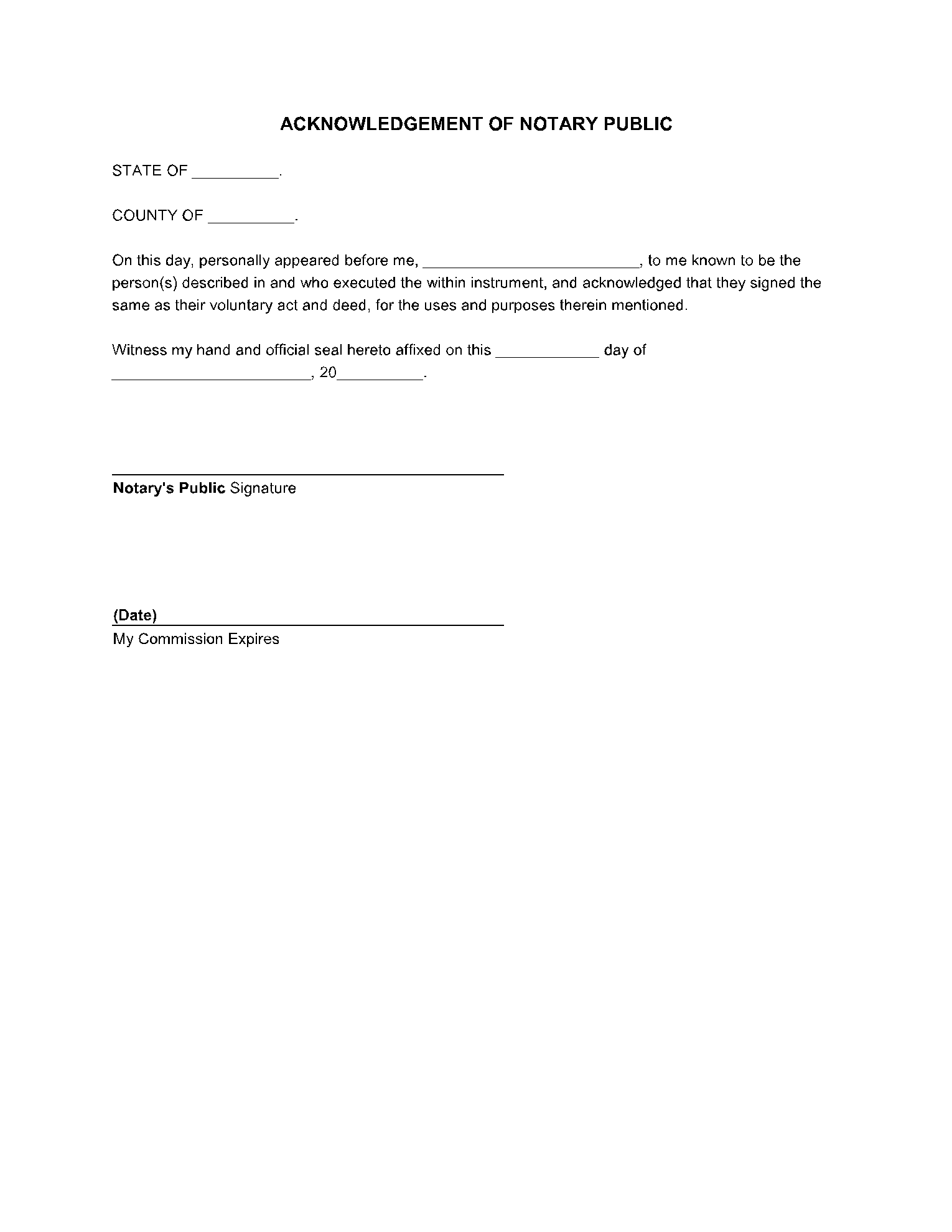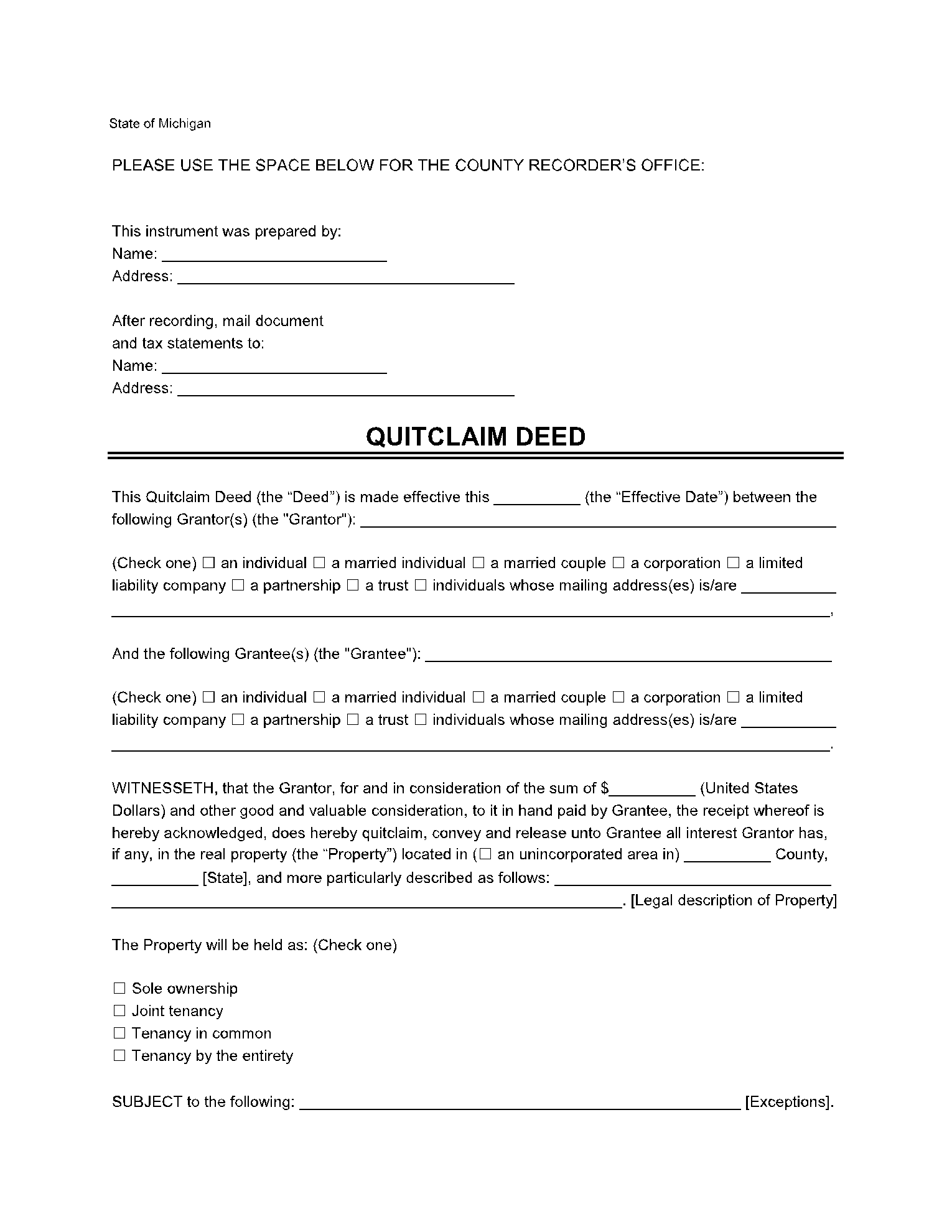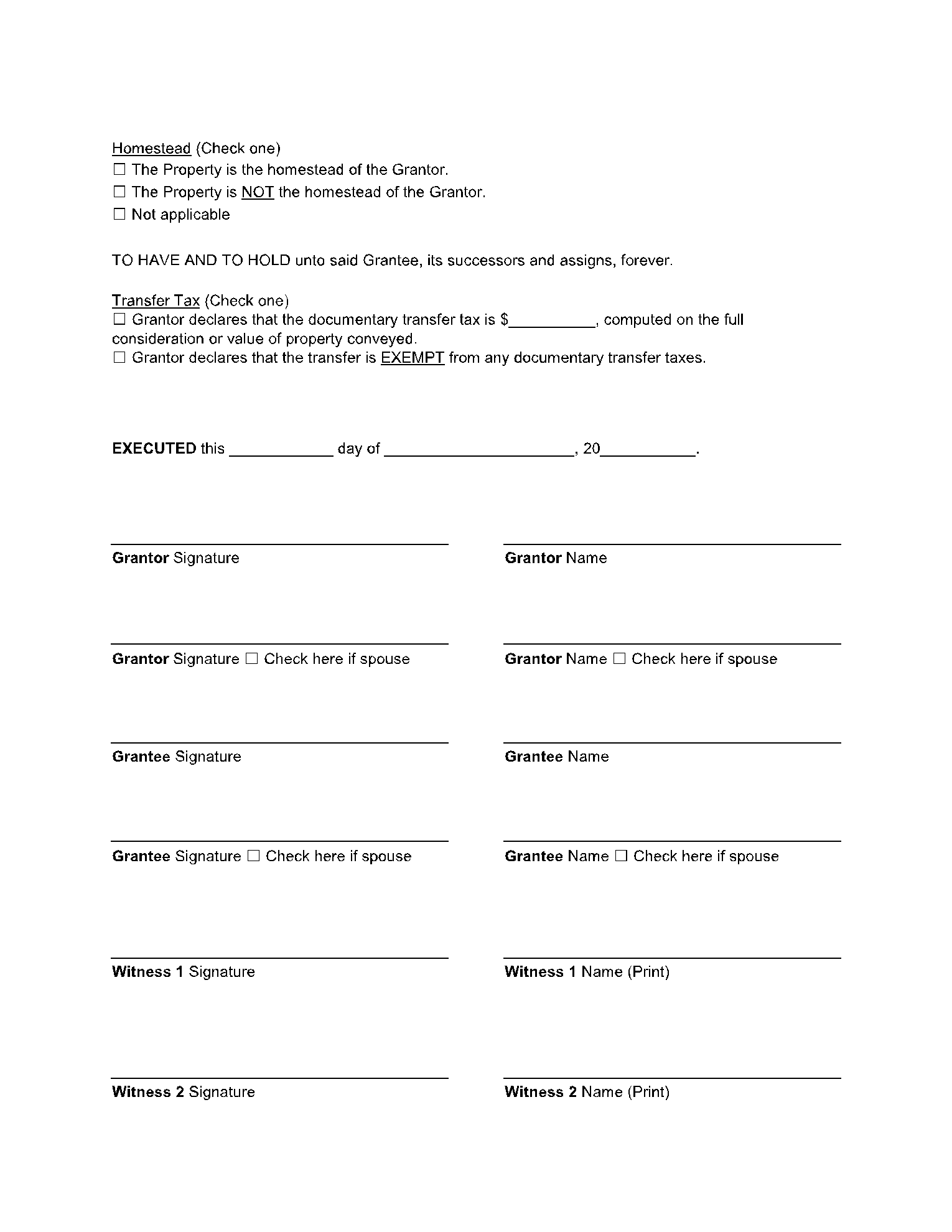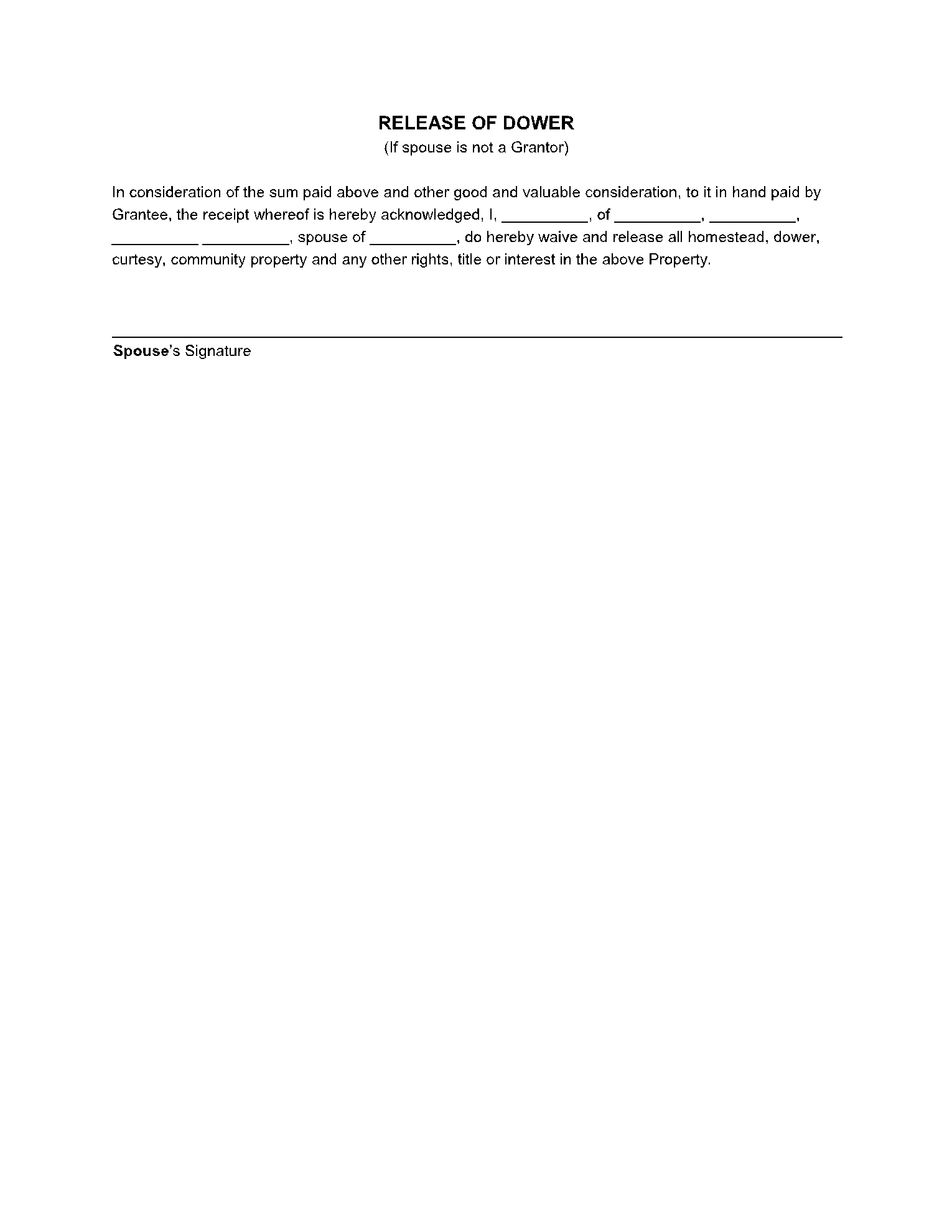Real estate transactions in Michigan where the seller has no way of proving they are valid owners of the piece of property are closed by issuing a quit claim deed Michigan form. It’s a document that testifies that the purchase is made with the acknowledgment of the fact that there is no warranty on the title, and that it’s possible for the seller to face future ownership issues.
That’s why it’s only used for transactions between family members and people who know and trust each other. Even so, it’s still advisable to do a title search before writing the quit claim deed form Michigan.
These are some of the standard components that need to be present in the quitclaim deed form template Michigan style:
- Description of the property
- Details of the buyer and seller (or the transferor and transferee)
- Details of purchase and cost
- Information on applicable laws
What Is a Michigan Quit Claim Deed?
A Michigan quit claim deed is a formal document issued in Michigan when two parties decide on the purchase of a real estate property in the absence of the title or other proof that the seller is the real and only owner.
It testifies to the transfer of ownership from the grantor (seller) to the grantee (buyer) in these particular conditions. What the grantor actually sells is their interest in the property, since they are unable to provide a title.
Despite being a document that provides no safety for the buyer, it’s used quite frequently. It’s a good option for family members who want to change ownership of a property or if one spouse wishes to add or remove the other after marriage or divorce.
When a family is involved, they usually already know the entire history of the property and aren’t worried about future problems.
Requirements for Michigan Quit Claim Deed
Michigan law allows many types of deeds, including Michigan quit claim deed. This particular deed is popular because it doesn’t force you to do a title search, although this step is highly recommended. It’s also an inexpensive way of transferring property. So, when the two parties trust each other enough, it’s a good option for a purchase that offers no guarantee.
There are still a few legal requirements that must be met, even for this type of deed. An essential requirement is to clearly stipulate that the grantee understands that there are no warranties and still accepts to make the purchase. The phrase ‘A.B. quitclaims C.D. (this is where you describe the property) for the sum (mention the price here).’
The second legal requirement authorities make is that the quit claim deed form Michigan needs to be signed in front of a notary public. Once signed and notarized, the document must go to the Michigan Registry of Deeds. But before recording it, you need to pay the transfer taxes.
It’s the grantor that usually pays all the taxes required by the state and the County. There are some particular situations when the transfer is exempt from this tax; that’s generally for transactions between spouses or parents and their children.
Another legal aspect to consider when signing a quitclaim deed form Michigan is the statute of limitations. In Michigan, you can challenge a quitclaim deed, but the statute of limitations differs depending on the situation. When fraud is involved, you have six years to start a lawsuit, and when two parties claim the same property, the statute of limitations is fifteen years.
How to Fill Out a Quit Claim Deed in Michigan?
The best way to write this document is with a quit claim deed Michigan template. That way, you can be sure it has all the necessary sections and is accurate and efficient. The first step is to download the form in whatever type of file you prefer: PDF, Word, or ODT. Then, start filling out the blanks, making sure that these elements are included:
- The preparer’s full name and address
- The full name and address of the person who will receive the document after registration; make sure they are correct because the County Clerk will use that information to mail the document
- The County where the real estate piece is located
- The identifying information of both the grantor and the grantee: name, address, including State and County
- The legal description of the property, including the address and parcel number
- Names, addresses, and signatures of all the parties involved
- The notary public must complete the last part of the document
Conclusion
Despite the risky nature of quitclaim deeds, people are using them quite often, including in Michigan. The quit claim deed Michigan form can be beneficial when there is complete trust between the parties involved, as it is a cheap way of transferring property.
If you need to issue a Michigan quit claim deed, it’s best to use the template created by CocoSign. All the templates they offer are easy to use and comprehensive, and they have one for every document you may need to write.



